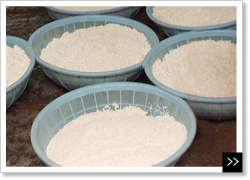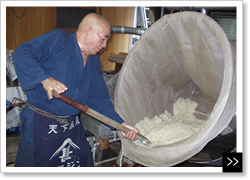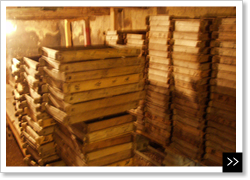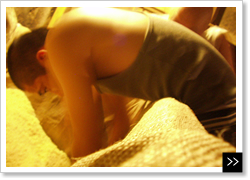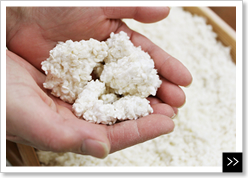
Koji spores are the key actors in making koji. It is the job of the koji master to create an optimal environment for the koji spores to propagate. Let’s look at our process for making koji.
Day One (Senmai • Shinseki)
- Wash the rice and soak it overnight in water.
Day Two (Koshiki • Tokoire)
- Drain the rice and then steam it in a cloth-lined steamer.
- Remove the steamed rice from the steamer and spread it out to cool.
- Inoculate the cooled steamed rice with koji spores. We use sterilized spores from a koji spore supplier. There are 10 koji spore suppliers in Japan. Even large-scale sake companies buy koji spores.
- The inoculated rice is placed in a large tub-shaped wooden container called a tokobune in the temperature-controlled koji room and left to incubate.
Day Three (Tokomomi • Mori • Shimai )
- After one night in the tokubune, the koji spores begin to propagate and the fermentation process begins. Heat is generated when the koji begins to grow, so it is necessary to cool the koji by mixing it by hand or with a large paddle. Clumps are broken apart and spread around.
- The immature koji is then transferred to long, shallow wooden boxes and stacked to get the cooled koji active again. It is periodically set in mounds and then separated to maintain the appropriate temperature.
- A few hours after the koji has been transferred, the final process is to slow down the increase in heat. Our hands dance through the warm koji to keep it at the proper temperature.
Day Four (Dekoji)
- The finished koji is taken out of the koji room and cooled. The rice is partially broken down and covered with white, wooly filaments. It has a rich, sweet aroma. It is ready to be used.


